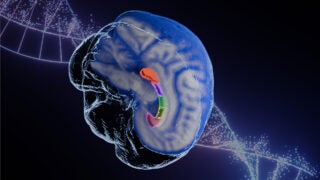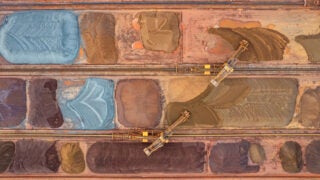Busy Signals
The National Medal of Science recognizes Solomon Golomb’s many contributions to communications technology.
The teenage Solomon Golomb, a mathematics prodigy at Johns Hopkins University, probably never considered that the nation’s commander in chief would someday honor him for his intellectual prowess.
Yet there stood Golomb next to President Barack Obama at the White House in February, more than six decades after getting his first college diploma, his mind as curious at age 80 as it was at 18. In recognition of Golomb’s profound contributions to technology, Obama placed a red, white and blue ribbon with a golden medallion around his neck: the National Medal of Science.
The award is America’s highest honor for invention and discovery. Golomb was one of only a dozen researchers to receive it for 2011, the latest year awarded.
But Golomb’s motivation originates from a different prize: the successful, thrilling hunt for answers to difficult questions.
“My research has always been directed by working on problems that i found interesting and challenging, and that I believed I had a chance to solve,” he says. “I have never thought about receiving awards for my work, but it is always a pleasant surprise when they occur.”
Golomb has often been pleasantly surprised in his career.
As Erna and Andrew Viterbi Professor of Communications and University and Distinguished Professor of Electrical Engineering and Mathematics, Golomb holds appointments at the USC Viterbi School of Engineering and USC Dornsife College of Letters, Arts and Sciences. But his ascent began thousands of miles from USC.
Born in Baltimore, he pursued his doctorate in mathematics at Harvard University and worked summers at Baltimore aerospace firm Glenn L. Martin Co. (now part of Lockheed Martin).
Out of this combination of rigorous academia and the working world grew Golomb’s ideas. Among them: illuminating the mathematics behind “shift register sequences,” seemingly haphazard series of 0s and 1s that conceal order behind their randomness.The feat would prove important.
While his Harvard professors took pride in promoting the purity of mathematics, Golomb sought its purpose—mathematics’ practical side ultimately drew him in. So in 1956, he moved to the Jet Propulsion Laboratory in Pasadena, Calif., where he was swept up in the scientific fervor of the age. He and his fellow youthful, brilliant minds drove the race into space. JPL friends included Andrew Viterbi, whose naming gift later endowed USC’s engineering school.
Golomb’s work with shift register sequences bore fruit at JPL. Experts had said the mathematics behind them had no application, but he defied the purists. His insights enabled JPL engineers to build a communication system that bounced signals off Venus and accurately detected their echoes.The evolving technology eventually influenced everything from mars exploration to cellular phones.
Then Golomb eased into his career’s next phase: mentorship and performing research. After teaching part time at several Los Angeles-area universities, he made USC his academic home in 1963.
He has since amassed honors too numerous to list, including information technology’s highest honor—the Shannon Award—and election to the National Academy of Engineering and the National Academy of Sciences.
Even after 50 years, Golomb continues to teach first-year students. He also is an expert on an array of topics including the classics, european history, puzzles, viniculture and several languages.
Citing Golomb’s many contributions, USC President C. L. Max Nikias summed up the sentiments of the Trojan Family: “USC is so proud to have been Professor Golomb’s academic home all these years.”
Pamela J. Johnson, Eric Mankin, Robert Perkins and Alicia Di Rado contributed to this story.


